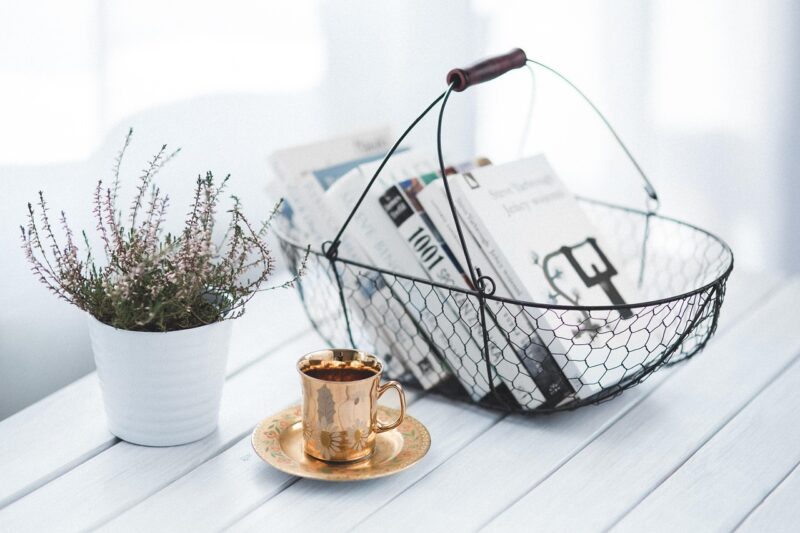The Impact of Color on Mood: How to Choose the Right Colors for Your Home
November 14, 2024

Color is more than just a visual element; it’s a powerful tool that can influence our emotions and behavior in profound ways. Whether we realize it or not, the colors that surround us can evoke feelings of happiness, calmness, energy, or even sadness. Therefore, when it comes to decorating our homes, understanding the impact of color is crucial. In this comprehensive guide, we will explore the psychological effects of various colors, how to choose the right colors for your home based on the mood you want to create, and practical tips for implementing color in your décor.
1. The Psychology of Color: Understanding Emotions
Psychology has long studied the impact of color on our mood and emotions, revealing insights into how different shades can influence our feelings. Here’s a breakdown of some popular colors and their associated moods:
- Red: Often associated with energy, passion, and excitement, red can also stimulate emotions such as love and anger. It can increase heart rates and evoke intense feelings.
- Blue: Known for its calming effects, blue can create feelings of tranquility and peace. It is often used in bedrooms or spaces designed for relaxation.
- Yellow: This vibrant color is linked with happiness, positivity, and energy. However, in excessive amounts, yellow can lead to frustration or anxiety.
- Green: Associated with nature and growth, green can create a sense of balance and harmony. It’s an excellent choice for spaces intended for rejuvenation.
- Purple: Often linked with luxury and creativity, purple can evoke feelings of sophistication and can stimulate the imagination.
- Orange: An energetic color that combines the warmth of red and the cheerfulness of yellow, orange can inspire enthusiasm and creativity, making it great for social spaces.
- Neutral colors (white, grey, beige): These colors can create a sense of calm and stability, making them versatile backdrops that can amplify other colors in a room.
Understanding the emotional connections of colors can help you strategically design your home for maximum comfort and enjoyment.
2. Choosing the Right Colors for Different Spaces
When selecting colors for your home, consider the specific purpose and mood you’d like to create in each space. Here are some suggestions based on common rooms:
- Living Room: This space is often used for relaxation and socialization. Warm colors like soft yellows or warm neutrals create a welcoming atmosphere, while accents of red can add energy!
- Bedroom: For a calming and restful environment, consider choosing cool colors such as soft blues or greens. These colors can help lower stress levels and promote better sleep.
- Kitchen: Bright colors like yellow or light green can stimulate appetite and create a cheerful atmosphere conducive to cooking and entertaining.
- Home Office: Use colors that inspire productivity and creativity. Blues and greens can promote focus, while pops of orange can stimulate enthusiasm.
- Bathroom: For spa-like tranquility, consider using soothing colors like soft turquoise or light lavender, which can create an inviting atmosphere.
Taking the time to align the color palette with the purpose of each room will enhance your overall home experience.
3. Tips for Implementing Color in Your Home
Choosing the right colors is just the beginning. Here are practical tips for implementing those colors throughout your space:
- Start Small: If you’re hesitant to commit to a whole room, start by adding colorful accents through accessories such as cushions, rugs, or artwork. This allows for flexibility and experimentation.
- Use a Color Wheel: Familiarize yourself with complementary colors on a color wheel to create balanced palettes that enhance each other’s beauty.
- Test Samples: Before painting, use sample patches on your walls to see how colors look in different lighting throughout the day.
- Layer Colors: Don’t hesitate to mix colors. Layering different shades can create depth and interest in your décor.
- Consider Lighting: Natural and artificial light can dramatically alter how colors appear. Always test colors in the lighting conditions present in your home.
Implementing these tips can make a significant difference in how effectively colors convey the desired mood in your home.
4. Color Trends: Staying Current Without Losing Your Identity
While it’s important to choose colors that reflect your personal style, being aware of current color trends can help keep your home feeling fresh and modern. Here are a few ways to incorporate trends without compromising your aesthetic:
- Accent Walls: If a trendy color is on your radar, consider using it for an accent wall. This allows you to be on-trend without overwhelming the space.
- Bring in Accessories: Incorporate trendy colors through soft furnishings or decor items, making it easier to switch things up later on.
- Use Neutrals Strategically: Pair trendy colors with classic neutrals to create balance and allow the colors to pop without overpowering the room.
Staying mindful of color trends helps rejuvenate your spaces while maintaining your unique style.
Conclusion: The Power of Color in Your Home
Color plays an integral role in how we experience our environment, shaping our moods and enhancing our well-being. By understanding the psychological effects of various colors, choosing wisely based on the purpose of each space, and implementing color thoughtfully, you invite positive energy and emotion into your home.
So whether you’re refreshing a room or embarking on a new project, remember the influence of color; with a little consideration, you can create a home that not only looks beautiful but also feels great to live in.
Embrace the journey of color selection and let it reflect your personality and the atmosphere you desire in your living spaces.





